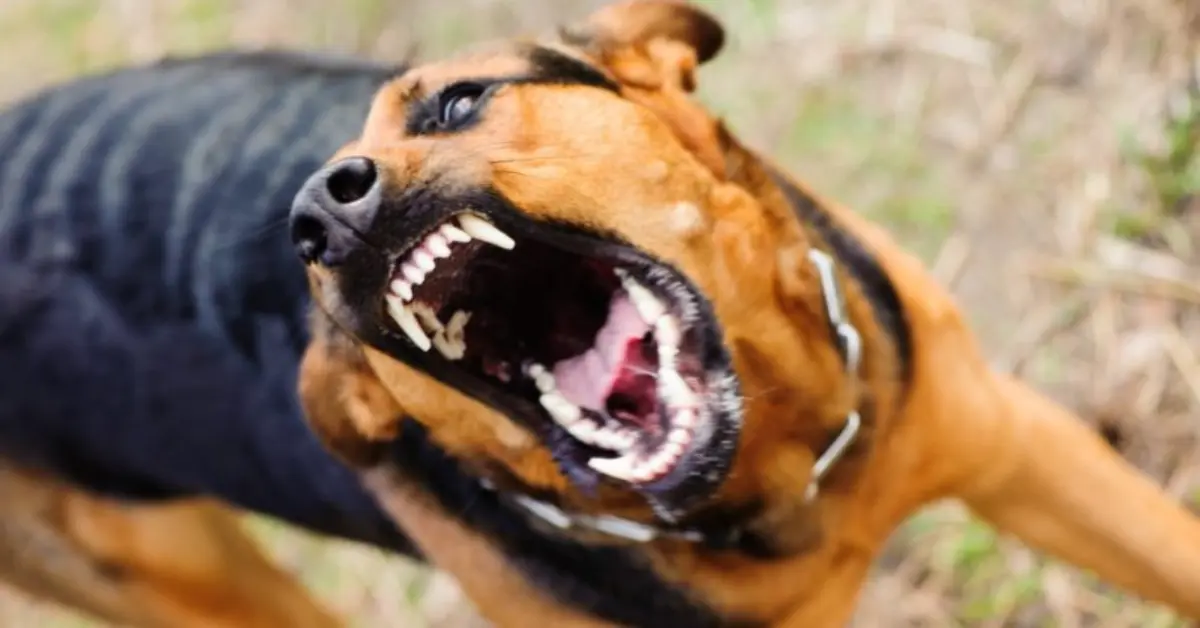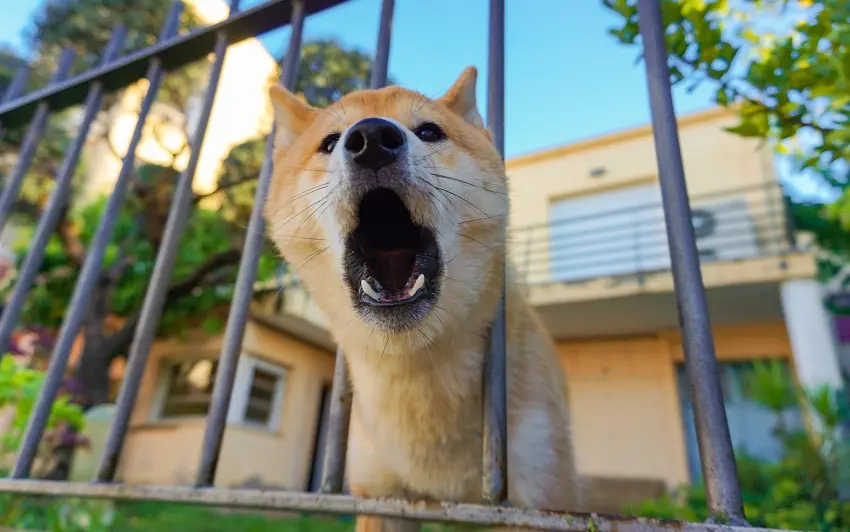Can Injuries From Dog Barks Result In Owner Liability?
Dogs are known to be as a “man’s best friend,” but there are instances where their behavior could put someone in grave danger, such as their powerful barks: can injuries from dog barks result in owner liability?
Barking is a dog’s way to communicate, to show their emotion or maybe authority. So, never expect a dog not to bark; it’s just like thinking a child should never talk. Even if you know your dog as a “good boy,” you can’t just avoid it barking at someone, resulting in “dog fright,” which sometimes results in accidents.

Keep on scrolling to further understand the topic.
An Incident From Dog Bark

As a pet owner, you should be aware of possible scenarios that might cost you a lawsuit, just as what happened in the case of Henkel v. Jordan, 644 P.2d 1348 (Kan. Ct. App. 1982). The incident occurred when the Henkels, with their bikes, passed by the Jordan house in Kansas.
The dog was considered a “pest” in the said neighborhood because of his barking that would be menacing. Unfortunately, the old man lost control and flew over the bike’s handlebars resulting in broken hips, broken clavicle, cuts, and abrasions all over his body.
He was admitted to the hospital for three months to recover from a concussion. The issue here is whether or not the defendants are liable for the injury caused by their dog?
Yes. This is considered a “dog fright” case wherein the accident occurred because the plaintiff got scared of the defendant’s dog, leading to injury.
There is negligence on the part of the defendants as they allowed their pet to run loose despite their knowledge that their dog usually chases vehicles and passers-by in a menacing way.
A jury in Kansas agreed too. After a full trial, the jury awarded the plaintiff compensation for his injuries and medical bills. The defendant objected and moved for what is known as a directed verdict.
This is an application to the court that the jury’s decision does not match the evidence and the court should issue a new verdict in the movant’s favor. The defendant’s complaints were largely on the grounds that the court’s instructions allowed the jury to find the plaintiff could suffer an animal attack without any contact.
The trial court disagreed and upheld the jury’s verdict. The defendant appealed to a higher court. Defendant argued regarding their liability will only be applicable if the dog had physical contact with the plaintiff and got bitten. The appellate court disagreed and found the trial court’s instructions were proper and the jury’s finding of liability for an animal attack without contact is just under Kansas law.
Essentially, the court found the plaintiff could maintain a cause of action for the injuries he acquired because of Peanut’s powerful bark resulting in personal injuries. Thus, the defendants are held liable for the injury caused therein.
Read the full case here.
From what you have read, victims will not hesitate to sue you or try to have you liable to get compensation for the damages or injuries your dog could have made.
But, how can injuries from dog barks result in owner liability?
Did negligence cause the injury?
Peanut was a cockapoo, part cocker spaniel, and part poodle that always bark at passerby and dashing at them, which most people find threatening. Since the owners would let the dog run loose, two neighborhood women who would walk past the Jordans house had a frightening encounter with the dog to the point where they have to take an alternative route.
And three days before the plaintiff had an accident, the lady next door found peanut “cornered” a little girl crying because of the dog she rescued. Although the dog has never bitten anyone, he became a menace to passersby, which the owners should be aware of by now.
So, did the negligence cause the injury? Because of the dog’s history, it was allowed to run loose despite its behavior; the dog owner must be liable for the plaintiff’s damages.
How Can Someone Prove A Dog Owner’s Negligence?
Generally, negligence with a dog owner is called a “prior knowledge jurisdiction,” sometimes called a “one bite” jurisdiction. A victim must prove certain elements in order to establish liability against a negligence owner. A victim from dog injuries could only prove that a dog owner is liable if:
- That the owner knows that their dog has vicious behavior and must control such behavior;
- That the owner was negligent in failing to do their task to control their dog that caused harm to another; and
- That their negligence caused the injuries of the victim.
Aside from these “elements,” the court may look for other pieces of evidence to prove that a dog owner is negligent: whether the victim’s injury was “reasonably foreseeable.”
Some factors can affect the decision of the court whether the dog owner acted reasonably or not, that includes:
Using of chains and warning signs

The court would consider that a dog owner performed reasonable precautions if the dog, confined inside a fence with a “Beware of Dog” sign, placing such signs is essential to warn other people from dogs, so they don’t get scared. please read here beware of dog sign law.
But there are instances where signs or warnings may not be necessary, just like the case where a guest fell stairs after she got scared of the host’s dog that growled from another room.
The court found the host was not liable for his guest’s injuries since the dog was inside a room, which is a reasonable precaution that doesn’t require any warning.
Knowing the breed of their dogs
Some breeds are territorial, making them aggressive towards strangers. So, if the owner knows about it and doesn’t take special precautions, the court could consider negligence.
But generally, a dog’s breed alone is not sufficient to create liability—the law does not see any automatic “bad dogs” and loves all dogs equally!
But there are some states that warn owners that certain breeds may require a higher level of care to prevent injuries to others because those dogs have a propensity to bite. please read here non bite injuries from a dog liability
But by default, the law sees every dog for who they are—man’s best friend. No dog is automatically deemed bad.
The dog’s past behavior
The court will usually look at your dog’s past behavior to see if much care is reasonable. Yet, in some states, even if your dog doesn’t have a history of showing aggressive behavior towards other people, you can still be found negligent.
For instance, when a dog has a history of barking at passersby, chasing them, or the case above, a cyclist was chased and fell. The owner was found negligent for allowing their dog to run loose with its behavior.
In contrast, there was a case where a dog owner was not found negligent for leaving out cinder blocks where the dog was able to reach the top of the fence and bit someone’s finger.
The dog has no history of showing any vicious tendencies, and it was behind the fence, so no special precautions were required.
The owner’s violation of the law
Lastly, dog owners are responsible for their dog’s actions; after all, it shows how you raise your pets.
If a dog injured someone because of their owner, it evident that it is negligence, and the court will indeed hold you accountable, as long as proved with pieces of evidence.
For instance, if a dog owner let their dog run loose around the neighborhood by violating their local leash law, the court will see it as negligence if the dog bite or hurt someone because its owner didn’t abide with the state’s dangerous dog law.
Negligence Is Not Always The Case
It’s not always common for victims of dog-bite to claim liability from dog owners only on negligence. In most states, “strict liability” laws are implemented, where dog owners are automatically liable for dog-attack or dog-bite injuries.
In some states where strict liability doesn’t apply, victims would usually claim dog-attack liability from dog owners based on negligence. If the state only covers dog-bite related injuries, damage due to a dog jumped on someone might not always be compensable.
And for states that make use of the “one-bite rule,” dog owners are liable for the victim’s injuries if they knew or should have known that their dog had vicious propensities to bite or tendencies to cause harm. If there was no prior bite, liability is not likely in these states.
In contrast, New York and Alabama are different. They have what is affectionately known as a modified “one bite” law. But in New York, this law does not come from statutory law (made by the Legislature), but from over two centuries of common law evolution (or law made by judges in their written decisions). Whereas in Alabama this law is in both the statutes and the decisional law.
New York even goes as far as saying that the “one bite” law is a “misnomer.” This is because both New York and Alabama will impose strict liability on dog owners who knew or should have known that their dog has a vicious propensity or proclivity to cause harm to others. That means if a victim can prove the owner’s dog had vicious propensities like snarled, growled, bared its teeth, or lunged at people, an owner could still automatically be liable for the dog’s first bite on anyone.
Thus, unlike some one-bite states that require a dog to actually bite someone first for the second bite to result in liability, New York and Alabama could impose strict liability on the very first bite if the owner knew or should have known that their dog could bite or harm someone.
Regardless, trying to prove all the negligence elements could be difficult, as the outcome would still depend on the current situation and the laws regarding your case.
No duty of care; no sign of negligence
A dog owner should use reasonable care to keep their pets from hurting or frightening people, leading to injuries in predictable ways. But that wouldn’t happen if the owner is not around and a burglar, for example, decides to break into the dog owner’s house and for innocent passersby.
In a Colorado case, an eight-year-old boy passing behind a chain-link fence where the fence held two pit bulls in a backyard got frightened when the dogs barked and jumped at him. The scared boy ran into the street and got hit by a van. His parents sued the dogs’ owner and told him that he was negligent in putting those dogs where people passed.
But the Colorado Supreme Court thought otherwise, as the owner wasn’t present during the incident. Therefore, it wasn’t negligence as he didn’t owe the child a duty of care to his dogs.
Speaking With An Attorney Now
Whether you got hurt by a dog and want compensation, or you are the one being sued because of your dog, getting a lawyer will help you. However, you might not get the results you want as proving negligence in a dog-bite case or dog fright liability can be challenging since states have different laws regarding such matters. please read here dog fright liability for yappy injuries
For instance, dog bite attorneys in California will automatically make the dog owner liable if their dog bitten a person, “one-bite” law doesn’t apply to them; the same goes with Chicago dog bite lawyers.
As for New York, you have to prove that the dog owner knows about their dog’s aggressive behavior to ask for compensation. But for injuries resulted from being frightened because a dog might have a different approach.
Yet, for the case we have read earlier, Kansas made the dog owners responsible for the injuries their dog made because of “dog fright.”
Having a lawyer will help you ease the situation; whether you’re the dog owner or the injured person, we all deserve to protect our rights.
9 Laws A Dog Owner Should Know

As you have read earlier, in the case of a dog who chased a cyclist, the owner was found liable for letting his dog out without a leash. We all love dogs, but we should consider the laws implemented in our place to keep our dogs and other people safe. Moreover, you don’t want to end up in a courtroom, do you?
So, here are some laws you want to remember you should follow to keep away from trouble. But remember that rules might differ from state to state, so consult your place’s rules and regulations to make you aware.
#1. Vaccination for your dog
Of course, dog owners must make sure that their dogs are vaccinated. Since vaccination helps your pet healthy by protecting your dog from fatal diseases, it also eases rabies to protect people because it can be deadly.
The required frequency for vaccination would vary from every state, so make sure to consult your vet to know its best. Moreover, some states would allow exemptions of rabies vaccines only for dogs that pose a medical risk when immunized.
Failure to follow the mandated vaccination, the state will give you penalties such as confiscation of dog, fines, or worse, jail time; depending on your city or state, how they will punish such incompetence.
#2. Pet waste; clean it up
Most cities in the United States are now implementing a local ordinance that pet owners should pick up their dog’s waste and throw it correctly, except if it’s in the dog owner’s place.
We all find it annoying to see animal waste lying on the street, and if you’re one of the unlucky ones, you might step on it. The said law is essential that you should follow to help maintain your place’s cleanliness.
Now, the penalties for the lawbreakers would always be a fine, depending on your state. Yet, without a law, it is your responsibility as a pet owner and a citizen to keep your place clean.
As you continue your daily walk with your lovely pet, make sure to bring with you a poop bag or poop scooper in case your dog would have to take the call of nature.
#3. Pets on leashes laws
Leashes are required when you walk your dog because, of course, you don’t want to lose it and also to keep everyone safe. In general, the law requires you to keep your dog on a leash if it’s not on your property.
Again, specific laws vary in every state, as there are other places where you must leash your dog at certain times of the day, and some allow you to let your pet “off-leash” as long as you have full control of it.
Your penalty will result in ticketing and a fine if you are caught not following the said requirement.
#4. Canine licenses
In pretty much every city in the United States, canine proprietors are needed to buy a permit for their pet yearly (albeit a few areas offer lifetime licenses).
Additionally, the tag, which accompanies a substantial permit, should consistently be kept on the canine’s restraint. These labels are methods for following a dog back to its proprietor if the puppy gets lost and brought by creature control officials.
Regional authorities or areas are answerable for giving canine licenses. The charge for these licenses shifts from places and can be affected by various components.
Administration canines, for instance, may get free licenses. Fixed pets, pets claimed by the older, and low-pay canine proprietors may get diminished charge licenses. Inability to permit a canine implies that two things may occur.
Initially, a canine proprietor got without a permit for their canine is charged a fine of a sum dictated by the city or district. Besides, a dog found by creature control and doesn’t have a permit might be euthanized significantly earlier than a canine with a license.
In the present circumstance, the creature control officials should coordinate a coordinated attempt to contact and discover an authorized dog’s group and keep the canine alive during a predefined holding period.
#5. A strict liability dog- bite statutes
Strict liability dog bite statutes will impose liability for an injury caused by your dog, whether or not you believe that your pet could’ve hurt the person.
The said rule would only apply if the injured person did not provoke your dog and attacks a person who acts peacefully in an area where the person is allowed. But dog bite statutes may not be solely applicable to biting incidents; the state might consider other types of injury that might hold you accountable.
I have mentioned the “One Bite” rule earlier that I will discuss further later because if a state only considers dog bite statute for dog bites alone, for another type of injury, then the “One Bite” rule may play a role.
Since some states that haven’t enacted strict liability, they usually adopt the “One Bite” rule instead. Regardless, the states that follow dog bite statutes or strict liability for dog bites.
The states are Kentucky, California, Arizona, Colorado, New Jersey, Ohio, Oklahoma, Pennsylvania, Rhode Island, Connecticut, Delaware, Florida, Illinois, Indiana, Iowa, Louisiana, Maine, Maryland, Massachusetts, Michigan, South Carolina, Nebraska, Wisconsin, New Hampshire, Washington, and West Virginia.
Additionally, in states including Hawaii, the District of Columbia, North Carolina, Tennessee, and Georgia, dog bite statutes would only impose strict liability in certain circumstances, like when a dog owner let their dog off-leash and bites someone. The owner will be liable for the injury.
Further, New York and Alabama have unique dog bite laws which follow the “one-bite rule,” but impose strict liability if there is knowledge of a dog’s propensity to harm another whether or not the dog has bitten someone before.
#6. The “One Bite” rule for dogs
Now that we come to this point, let me discuss further the “One Bite” rule.
The common-law rule would help determine a dog owner’s liability if their dog caused an injury to a person. It doesn’t have to be a dog bite; it can be any injury your dog has made.
The rule states that if the owner knew or had an idea that their dog could have done the said injury, the injured person may have their compensation. Yet, the “One Bite” rule is said to be debatable if the injured person provoked the animal or put their selves at risk of being bitten.
Regardless, the following states implement the “One Bite” rule; these are Wyoming, Alaska, Colorado, Arkansas, Idaho, Georgia, Mississippi, Kansas, Nevada, New Mexico, North Dakota, North Carolina, Virginia, South Dakota, Oregon, Texas, and Vermont.
Again, New York and Alabama have modified one bite rules.
#7. Barking dogs

Contingent upon where you reside, either state laws or nearby mandates cover the issue of yapping canines being an aggravation.
In certain occurrences, a particular law exists focusing on yelping canines; however, where that law isn’t in play, commotion mandates have comparable reach.
The individual subtleties of what establishes “disturbance” commotion from woofing canines shift from area to region.
All in all, nonetheless, dogs that bark inside specific hours of the evening or early morning or canines that make an incredible degree of commotion are viewed as “disturbance” canines.
For this situation, these canine proprietors can hope to be considered capable. Discipline can go from admonitions to fines to being compelled to surrender the irritation canines to creature control.
#8. Lots of dogs might be a problem
With regards to the number of canines, a canine proprietor can legitimately have, the law shifts. Those people who live in country zones have no limits on the number of dogs they can keep insofar as the canines are focused on and not a disturbance.
Living in the city, notwithstanding, is a unique story. Urban areas will, in general, build-up citywide laws that control the number of canines is allowed in a detached home.
For the most part, this number is somewhere in the range of two and four dogs for each family unit, and families with more than this number are needed to get extraordinary permitting and pay extra expenses.
Only one out of every strange city has a breaking point on the number of canines that can be possessed; in any case, that doesn’t imply that canine proprietors are free. In many instances, lodging associations build-up standards where the city doesn’t.
Indeed, even where lodging associations don’t build up these guidelines, be that as it may, neighbors and networks can record irritation protests if they feel a mortgage holder has such a large number of canines.
It typically happens when the pets cause commotion, scent, or unsanitary conditions.
#9. Other dog laws
The canine laws recorded above touch on the absolute most problems that concern canine possession, numerous rules that canine proprietors should live up to follow.
The best spot to get some answers concerning these laws and how they involve you is to visit your city or district site and quest for creature administrations or creature control.
If you are incapable of discovering the data you are searching for, call the nearby creature control and request some heading.
Conclusion
Having a pet will be a responsibility and, in some cases, a liability. Your dog’s behavior can either help people, like therapy and K9 dogs, or hurt others.
So, as a pet owner, you should know your pet, train it to be friendly with other people, and look out for your dog when it’s around strangers.
Make use of reasonable precautions to prevent your dog from hurting people. Regardless, Powerful barks: Can injuries from dog barks result in owner liability?
Yes, you can be liable for an injury resulted from “dog fright.” But, as long as you proved to the court that you practice precautions, you have no liability for the damages.
